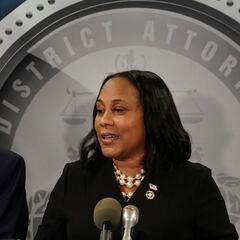What does a government shutdown mean and when was the last one?
The U.S. government entered a partial shutdown on Oct. 1 after Congress failed to pass funding bills.

Government shutdowns are nothing new in US politics. While they were relatively common, but very short, in the 1980s, since the 1990s they have become less frequent, but more damaging.
On October 1, 2025, the U.S. government entered a partial shutdown due to Congress failing to pass funding bills with three stumbling blocks: Healthcare subsidies, Republican opposition to policy demands and Trump administration actions.
How to end the government shutdown
To end the shutdown, Republicans and Democrats must reach a bipartisan agreement, which inevitably results in at least one of the two parties ceding ground.
🇺🇸 The US government shut down after midnight Wednesday as President Donald #Trump and lawmakers failed to break a budget deadlock over health care funding.
— FRANCE 24 English (@France24_en) October 1, 2025
🛑 It’s the first shutdown in nearly 7 years, sidelining thousands of federal workers pic.twitter.com/im7YQ0Yt8u
On this occasion, Democrats have refused to back a Republican bill which they believe will make it harder for Americans to afford healthcare. They are also opposed to spending cuts to the National Institute of Health (NIH) and Centers for Disease Control (CDC).
Once an agreement is reached, Congress needs to pass, and the President must sign, appropriations bills to fund the departments and agencies that have been shut down.
A stopgap bill has been passed in the House, but not the Senate, as yet.
Who is affected by the government shutdown?
No spending package means non-essential government workers may be temporarily furloughed and new spending ceases. Many other federal employees could also go without a paycheck but told to come to work anyway; they are usually reimbursed at a later date.
This is all down to a quirk in the way the US is governed that no other country has to deal with.
When was the last government shutdown in the US?
There have now been a total of 11 government shutdowns in US history, ranging from just four hours to 35 days. The first was in 1980, when the Federal Trade Commission had to be shut down for a day after Congress failed to pass a bill for the agency.
The most costly in history, as well as being the most recent was the shutdown over the holidays of 2018 to 2019 which lasted for 35 days, costing an estimated $11 billion. This was caused by President Trump wanting to grant extra funding for his border wall, but the Senate was determined to stop it happening.
Why do government shutdowns happen?
Shutdowns happen because Congress is the only body responsible for the allocation of government funding. This means if Congress cannot pass a budget, the president does not have the power to unilaterally decide on funding.
There is a backdoor solution, called the continuing resolution, which can temporarily fund the government.
Do other countries experience shutdowns?
Short answer, no.
Longer answer, the American political system means the president can be in power without having his/her party controlling Senate or the House. This makes passing legislation, including budgets, much more difficult.
In other presidential systems around the world, the president has the authority to keep governments functioning without a budget. In parliamentary systems, prime ministers normally resign if they no longer control the majority in parliament, leading to more elections.
Related stories
Get your game on! Whether you’re into NFL touchdowns, NBA buzzer-beaters, world-class soccer goals, or MLB home runs, our app has it all.
Dive into live coverage, expert insights, breaking news, exclusive videos, and more – plus, stay updated on the latest in current affairs and entertainment. Download now for all-access coverage, right at your fingertips – anytime, anywhere.


Complete your personal details to comment